Living, as we do, in an increasingly fragmented world – where tasks that used to be the domain of a single, skilled professional are subdivided and outsourced to increase throughput or save a buck – it should come as no surprise the trend has permeated game development as well. Which I don't have a problem with, really: times change, trends change with 'em — all we can do is adapt.
What I do resent, however, is companies that overpromise and overextend at the cost of overall quality for their project — which is a roundabout way of saying "I finished Everspace 2 and it was fun enough, but parts of it did not live up to expectations."
To begin with, completing the plot while reaching the level cap of 30 and achieving one hundred percent clearance in five of the game's six systems took me 101 hours, most of which was spent rooting out secrets and solutions to puzzles (the game's only consistent method for earning mainframe expansions and ship modules).
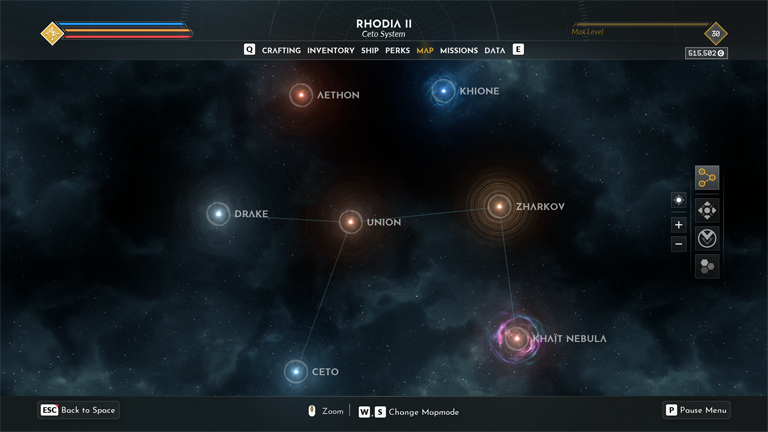
I think I wrote there were eight systems in the first part of the review? (which was incorrect) and the game shows seven on its system map but – as it turns out – outside of a brief foray during the last plot mission, Aethon (the seventh system) will not be accessible until the Wrath of the Ancients expansion is released.
Boleslaw (the Great)
The level design was the only aspect of the game that continued to impress throughout my playthrough. From desert junkyards and abandoned underground cities to ice fields racked by solar flares and terrestrial ice floes where, delightfully, even a space-pig could make like a duck and go sploosh, the game's environments – and the devs' devotion to making each one varied and unique – were easily the game's standout feature.
Ship design was great, for the most part, although it suffered from Trying Too Hard once you reached (some of) the vaunted Tier IV models, where the final evolution of a style you enjoyed could end up with the appearance of a Lego conconction by a kid who wanted one of everything on it. Thankfully, Tier IV performance is not tied to Tier IV appearance and once you buy a Tier IV ship, you can change its looks to that of any lesser tier you own the ship modules for.
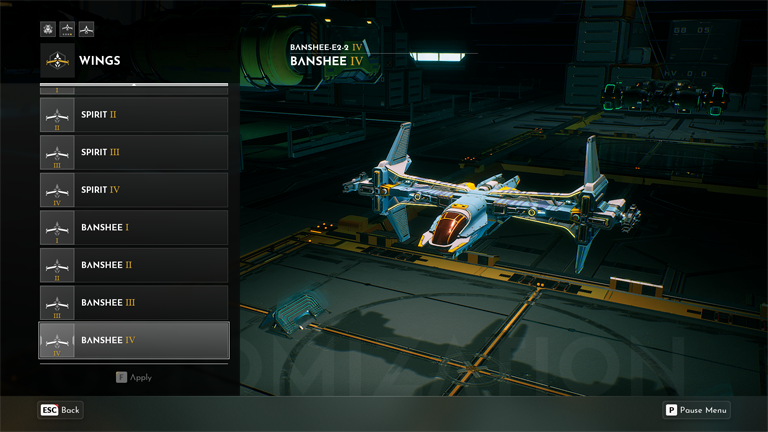
Unhelpfully, the only way to consistently gather ship modules is by ferreting out all the valuable shipwrecks, secure and bulletproof containers secreted about every region of the game's six systems. Which might give you a chance to appreciate the devs' level design chops and sheer ingenuity, but is not – in of itself – fun (but more on that in a bit).
Charles (the Affable)
Flying and shooting on three axes stayed pleasant enough, although – toward the higher difficulties and especially in High Risk Areas and Ancient Rifts – became skewed in favor of heavier ships that can deal large AOE damage and take more punishment.
The recurring elements of the game – such as the two Titans paid DLC events and post-end-game Incursions – were okay for what they were, with two caveats.
First, while getting swallowed (in the name of science) by a leviathan time and time again made a semblance of sense (because scientists are curious and the leviathans have no agenda and merely exist); the dreadnought should have probably been a one-time, linear affair with a decisive end in place.
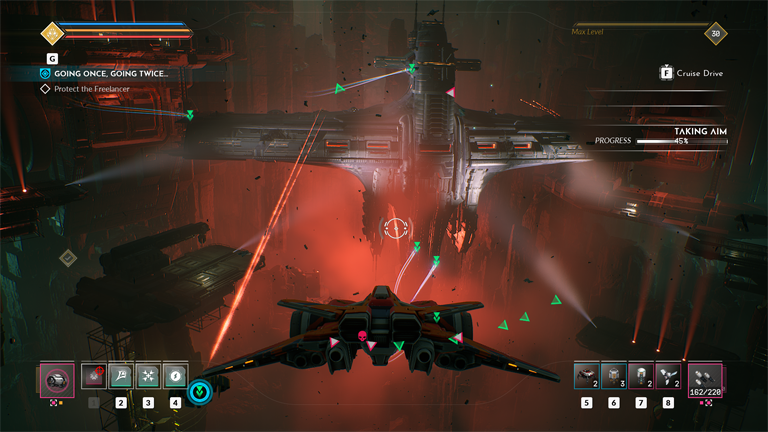
Consider. When you finish the last dreadnought mission, the giant ship is damaged and can no longer escape. However. It had been damaged at the outset and promptly repaired, which means – given enough time and provided you don't stop it every time it appears – it could be repaired again. Add the fact that every time you don't attend a dreadnought event civilians die, and the decision to keep it going as an endless loop starts looking decidedly odd.
Second, the frequent announcements that a recurring event is taking place sometimes interrupt in-system fast travel, which can get annoying if you're already covering a vast distance.
Some of the environmental puzzles were well-designed and intuitive enough to be fun. Whenever you tracked down an inaccessible area and then noticed cables leading underwater to its (eventual) solution, you couldn't help but grin, praising the devs' thoughtfulness...
Eric (the Unready)
...at other times, however, when a trail of holographic markers took the scenic way to lead you to a power core you had already used; a button to open a door was miles away with zero indication of where to look for it; or you were simply dumped into a massive location with no map, no handy-dandy X4 long range scanner and no way to cross off places you had already been, praise was the furthest thing from your mind as you underwent the drudgery of Ongoing Exploration and Even More (censored) Puzzles.
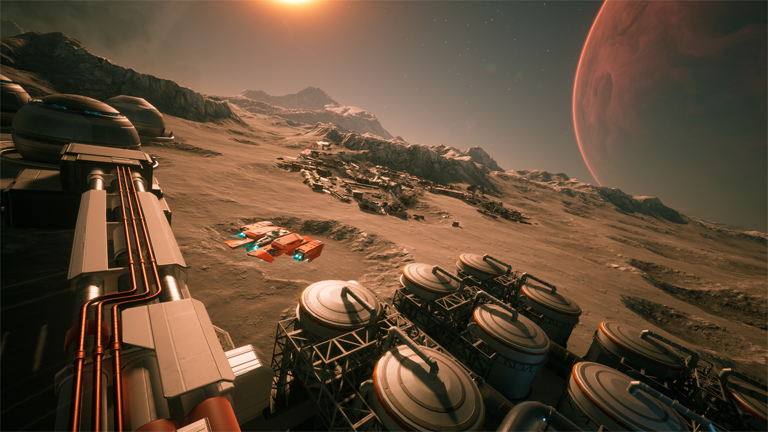
For as elaborate as each location is, the pool of Things To Do in it is – for a 100+ hour run-time – surprisingly limited and can eventually begin to feel rote and underwhelming.
Another thing that underwhelmed was some mission design, which – in a few instances – would railroad you into completing them The Prescribed Way, even though the justification for doing so made no real sense.
At level 30, having had cleared High Risk areas of level 31-33 opponents with no fewer than two Boss destroyers to top things off, I would fly into a mission against mere level 20s and be told "you don't have the weaponry to beat these guys"; or face indestructible opponents who could be damaged so far before they magically regenerated all their health; or, hilariously, be shown a cutscene where my hitherto Exceedingly Hard To Ding fighter is "damaged critically" by a single shot from some rando opponent and forced to flee...
Such shenanigans, while not uncommon in games, showed poor design in an otherwise competent production and kind of grated against the goodwill generated by being able to fly wherever you wanted and do whatever you liked.
But, irritating as they were, not even they classified as the low point of Everspace 2.
Arnulf (the Bad)
That dubious honor is reserved for the main plot, grinding and game stability.
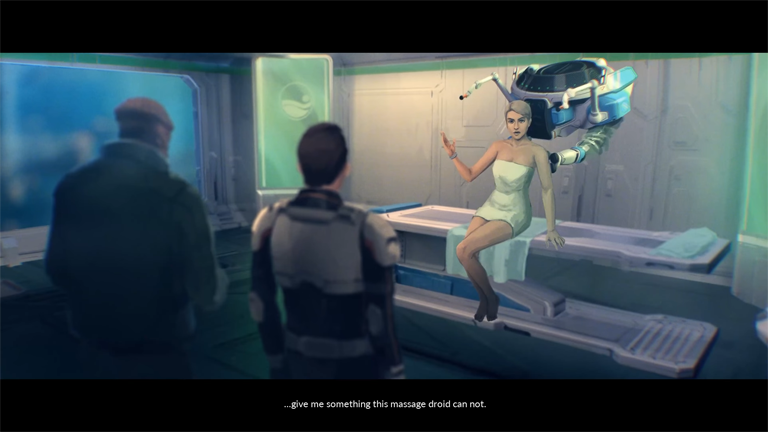
While you would think that a game's narrative would be the first priority of any production, here it felt tertiary, at best: like a last-minute addon to a visually impressive tech demo. And even though some of its characters were likable enough (just Elek, if we're being honest); and some lines could elicit genuine laughs, the longer it went on, the more its quality degraded until – by the end – it was more soap than space opera with flat dialogue, predictable events, telegraphed plot-twists and reused componentry from better stories.
Coupled with the jerky "animation" and variable quality of its cutscenes, the central story of Everspace 2 felt like a particularly annoying commercial periodically injected into a program you had actually wanted to watch.
The Diablo-esque mechanics behind random item generation coupled with a fairly small item pool and overly restrictive chances of Actually Getting Something Good are a tried-and-true way of extending the gameplay of any aRPG — but at the express cost of enjoyment and thus not a "solution" I'm fond of.
Unlike other RNG looters, where percentile drop chances are the rule for all items, Rockfish also seemed to make getting new ship modules particularly tedious. While – in the course of regular gameplay – you could gather item sets, weapons and ship components (such as armor or shields) several times over during an hour of play, you would often be lucky to unlock a single new ship module in that time.
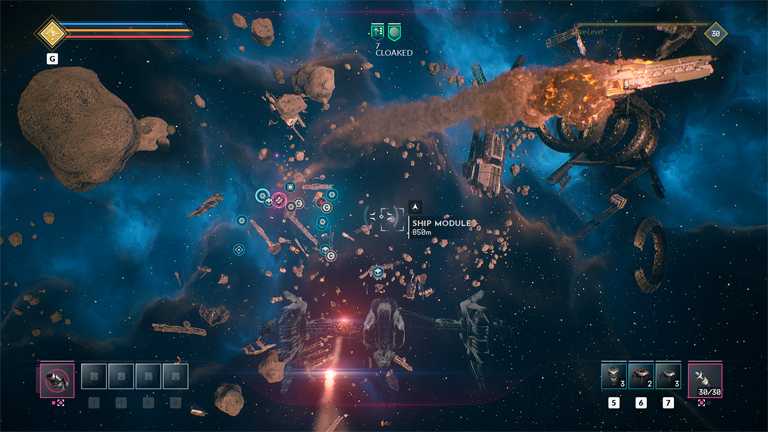
By the time I "finished" the game, I had unlocked all other ship customization but – even after clearing every secret from five out of six systems – was still some forty ship modules short. I'm just hoping that clearing Khione will net me the missing modules: I don't fancy having to keep grinding recurring events just so I can change the wings on a Liberator...
The perks from the last companion did not, as I had hoped, introduce more custom paint scheme slots for ships, which means – in spite of their distinct appearance – all vessels can only be painted one of four ways (although, oddly, you can change the modules they are made from). And while I can appreciate the QOL improvement of fast-travel, honestly – given how big of a focus ship customization is – I would have much preferred more paint scheme slots.
Lastly, the few crashes I mentioned persisted and grew to over a dozen. Not on any recurring schedule, mind: sometimes I'd play for 20 hours with nary a snag and others, I'd get a crash every few minutes. Since the game was partial to strain the GPU in the oddest places, I'm guessing it could be a graphics or optimization issue. Still, at the end of the day, even a dozen crashes in 101 hours ain't all that bad...
I mean – not every game can be Rogue Trader, right?
Neither a bang nor a whimper
While a critique of any sort can often slant perception toward the unfavorable end of the spectrum, I stand by my initial reaction to say Everspace 2 is a fun space-y shoot-and-loot.
The visuals are impressive, the flight mechanics and controls – intuitive – and the game world large enough to keep you fighting, exploring and squirreling away loot for as long as you can put up with its inherent, RNG limitations.
You won't find any "role-playing" here – not in the true sense of the term. There's stats you can adjust, sure, but the PC is fixed and the narrative entirely linear (save for two missions where you can make a choice, but both are inconsequential). All the game offers is flying, shooting and upgrading equipment...
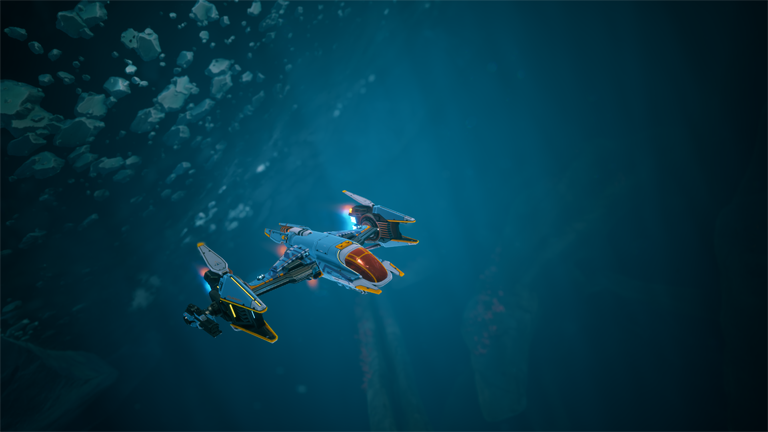
In doing so, however, you'll explore some truly stunning locations, listen to instances of fun dialogue and will not (outside of the grind) likely grow bored. While the game does only what it says on the tin, it does it with enough aplomb to keep this pig, at least, flying for a little while longer.
As the ancients race was, probably, my least favorite aspect of Everspace 2, I'm not sure I'll be interested in the upcoming expansion. But this outing to the DMZ, at least, has my oink of approval.
